We all fall in love with our gear at some point. Or at least some of our gear. The hand-me-down stuff is the easy stuff to fall for — your grandfather’s old fly rod, the pocket knife your uncle handed to you when you cleaned your first fish … those are gimmes.
But as we fish more — and more often — we tend to slide into habitual pursuits that call for the same gear, over and over again. For a few years, between 2016 and 2020, I enjoyed a white-hot love affair with a trusty Redington Hydrogen. The rod, a 9-foot, 3-weight was an unusual build for a recognizable brand, but it was the ideal implement for chasing trout in mid-sized water. The length gave my backcast a bit of cushion to overtop streamside willows, and the light, no-nonsense build with single-foot guides, an austere grip and a non-existent reel seat was ideal for small to mid-sized trout.
And then, in 2020, I hooked some creekside vegetation and, while trying to pop the fly free, the fly line looped over the tip-top and the rod broke. The affair was over. And go ahead … comb the interwebs for a 9-foot, 3-weight rod in that price range. Redington doesn’t make the Hydrogen anymore. If you have one you’re willing to unload, let me know!
But some gear that we fall in love with is more subtle. It’s easy to fall for a fly rod … to cast that next super-fast missile launcher or that soft-as-warm-butter glass stick at the trade show and spend the winter dreaming of it. Less so with fly reels. I mean, for us trout anglers, most really just serve to hold line. But ask a saltwater angler, and the reel might be more important than the rod.
And if you tie your own flies, you can certainly master a pattern or two and “fall in love” with a fly. I do tie a lot of my own flies, but have mastered too few patterns considering the effort and time (and money) I spend at the vise. There’s no love there … it’s a relationship built on economy and convenience. We’re friends with benefits, at best.
But I realized just the other day that I have a new love. And odd love. It borders on dependency. Comedian Ron White once said something akin to, “When I have less than an ounce of marijuana, I consider myself to be out of marijuana.” That’s exactly how I feel about Loon’s UV Clear Fly Finish. If I have to shake the little bottle, even a tiny bit, to get the resin to flow from the spout, I run down to the fly shop and buy another bottle.
No sense risking it.
And, I get it. What a weird thing to fall in love with. UV resin? Ugh. I have a closet full of fly rods, and a storage unit bursting with more fly rods. And here I sit, right now, mooning over a fresh bottle of UV resin, as if I’d be lost without it.
I might be, though. It’s maybe the most versatile item I have on my fly-tying table. In its “thick” version, a dollop popped over a pair of beaded eyes adds durability and a handsome head for streamers, and there’s no rush to douse it in UV light — it’s the consistency of luke-warm honey. The “thin” resin is a little easier to “direct” with a bodkin (or a toothpick), but you’ll need your UV light standing by to hit it the instant it’s where you want it.
But my favorite is the “flow” resin — it’s as thin as any head cement, and, rather than build up bulk and try to drip as soon as it can, this resin is so thin that, when carefully applied, it literally soaks into thread. Sure, you can build up a few layers of it if you need to, but I’ve taken to using this resin as my go-to for finishing flies. All flies — including dry flies.
I’ll even apply the resin to an unfinished dry fly, let it soak into the tying thread, and then whip-finish the bug on top of the resin. A final dose of UV light, and I’m confident that the fly is going to be durable and, if it fails, it won’t be where the resin hardened.
The “flow” and the “thin” versions of the resin are both great for tying nymphs (think anything with a “flashback”), and I use the flow resin to help parachute posts stand up on the hook shank before wrapping hackle around them. It’s simple — just hold the post upright, twist it tight, and add a dab of the thin resin to the base. Then, holding the post in place, give it a dose of UV light. Boom. Upright parachute post.
The resin comes in a variety of colors that come through on the finished product with varying degrees of success. But, regardless of color, the stuff works exactly how Loon says it works. And that may be a part of the love affair, too — I love the resin, but I have a table bursting with Loon tying tools, too. It’s not every day you find a brand that just never seems to let you down.
If that’s not love, what is?








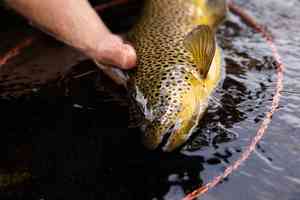





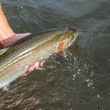




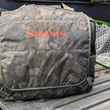




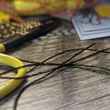




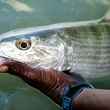
Comments
t-mac replied on Permalink
New to fly fishing and I love watching the tying videos despite not ever having tried to tie. This exact thought has crossed my mind before though! The resin sets up so quick and makes all the flies look so clean. Why not use it on every fly? Especially with the different thicknesses.
I'm planning on starting to tie once the weather cools down, so I would love to be told that I am wrong and why I am.
Thanks for the fun read and thoughts!
Glenn Dotter replied on Permalink
As you learn to tie you will find that while resins have their place, but there are patterns that simply need to be buggy. Ive been tying for 40 + years and while I am a purist, I have found resins are really helpful but they have their place in my mind. But the fun of tying is you decide what and how you want to tie. I'm not sure, but I think it was Jack Dennis that said " there are no new flies, just variations of the old ones". Enjoy learning
Further North replied on Permalink
I Love UV cured resin. It makes so many of the flies I tie easier to tie, and much more durable.
Anonymous replied on Permalink
Even great to tie a tiny loop to the end of my fly line when the factory loop gets worn. Twice as strong as any factory loop.
Pages